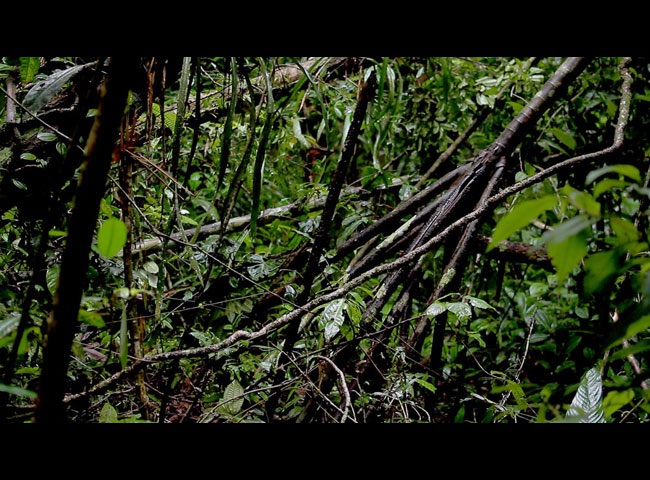Aequador
-
Réalisé par Laura Huertas Millán • Écrit par Laura Huertas Millán
-
Espagne • 2012 • 19 minutes • HD • Couleur
- Réalisation :
Laura Huertas Millán - Écriture :
Laura Huertas Millán - Image :
Alexandra Sabathé - Son :
Geoffrey Durcak, Laura Huertas Millán - Montage :
Gustavo Vasco, Laura Huertas Millán - Musique originale :
Karim Touzène
- Production (structure) :
Le Fresnoy - Studio national des Arts contemporains - Ayant droit :
Le Fresnoy - Studio national des Arts contemporains
- N° ISAN :
non renseigné
Résumé
Aequador est une relation de voyage sans parole, évoquant les dérives d'un rêve progressiste et moderniste en Amérique latine. Nous avons imaginé un temps révolu où une idéologie extrémiste se serait lancée à la conquète du territoire amazonien. Le film décrit, sous une forme composite et volontairement fragmentaire, ce présent parallèle où les fausses ruines et reliques d'architectures utopiques en 3D côtoient les constructions vernaculaires et la vie quotidienne d'êtres humains.
Interested in the hidden corners of exoticism and a reinterpretation of history as an aesthetic challenge, Colombian resident in France, Laura Huertas Millán (Bogotá, 1983), presents in Aequador —in her own words— “a parallel present modified by virtual reality, an oneiric allegory, an uchronic dystopia.” With foundations on science fiction —uchronia as a source for an alternative history can actually be seen as a subgenre—, Aequador establishes parallelisms —in a complex and deliberately fragmented way— between the (virtual) relics and ruins of an ideal 3-D architecture embedded somewhere in the middle of the Colombian Amazonas and the everyday life of people inhabiting that area. This equatorial semi-paradise, this dystopia evoking the excesses of a progressive and modernist dream, takes us back to a time (“a history without a chronology”) when foreigners established settlements in Latin America (a “non-place”) based on conquering ideologies and impulses.
Laura Huertas Millán continues delving into themes already present in her earlier work: nature as a place where the otherness arises, the issue of what is foreign and strange, and the hybridization of myths from diverse origins. Mixing different documentary registers with science fiction and fantasy while appropriating stock footage, Huertas Millán manages her craft from an in-between position to visual arts and cinema.
Human presence —and its associated rituals— is put in contrast with the phantasmagoric presence of virtual architectures. The sound tends to deconstruct ethnographic and anthropologic landscapes while showing instead a presence of parallelisms. And so, we evoke the Amazonian “Civilization” questioning the relation between architecture (real or virtual) and humans in a place where nature should reign. Coexistence among diverse human and non-human elements —as well as an atmosphere of extreme political and natural violence— is beautifully suggested by Huertas Millán, touching with the tip of the fingers that ultimate utopia: the possibility of living together, the ideal of a community."

